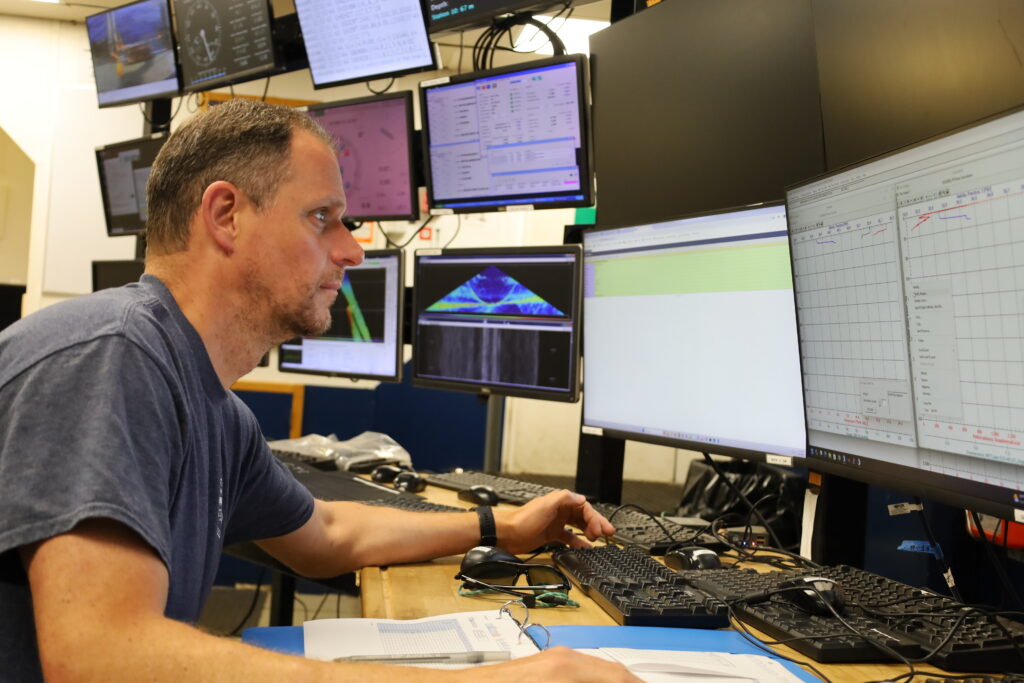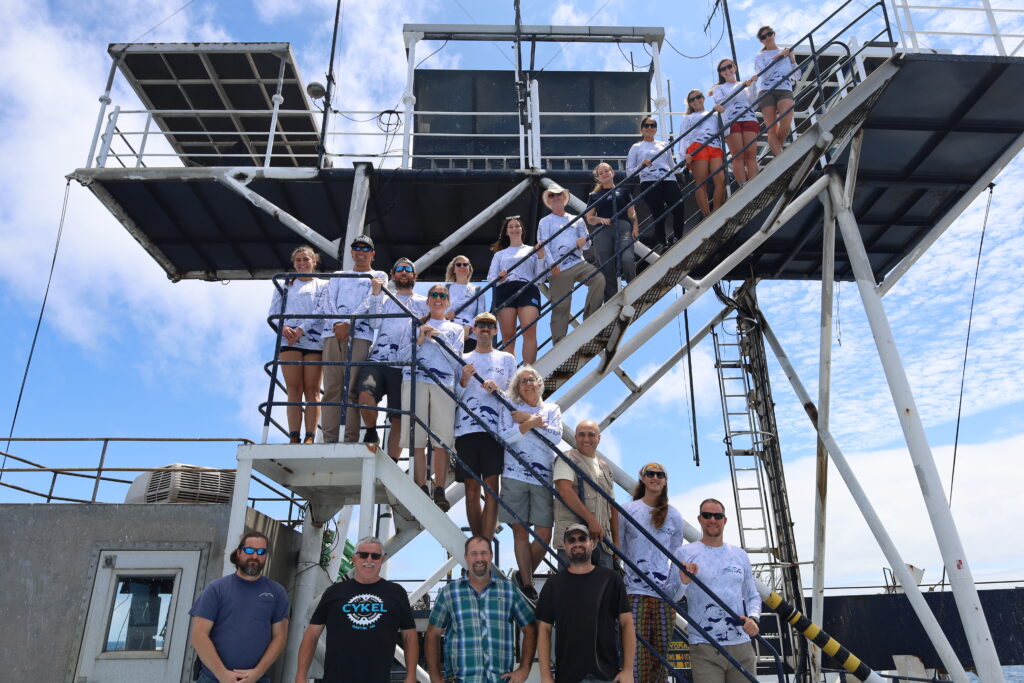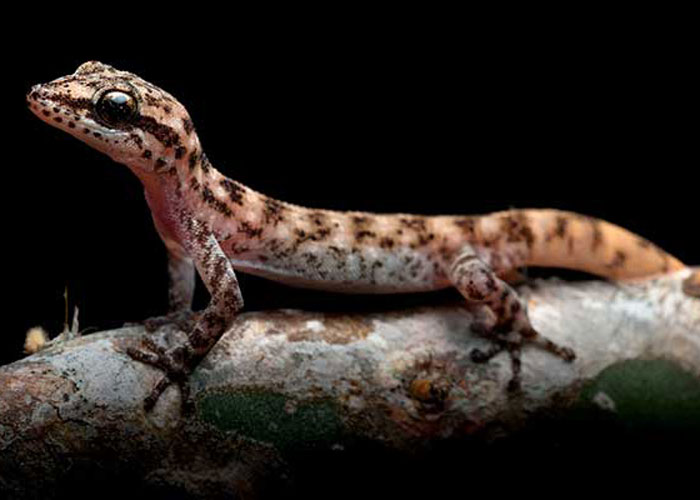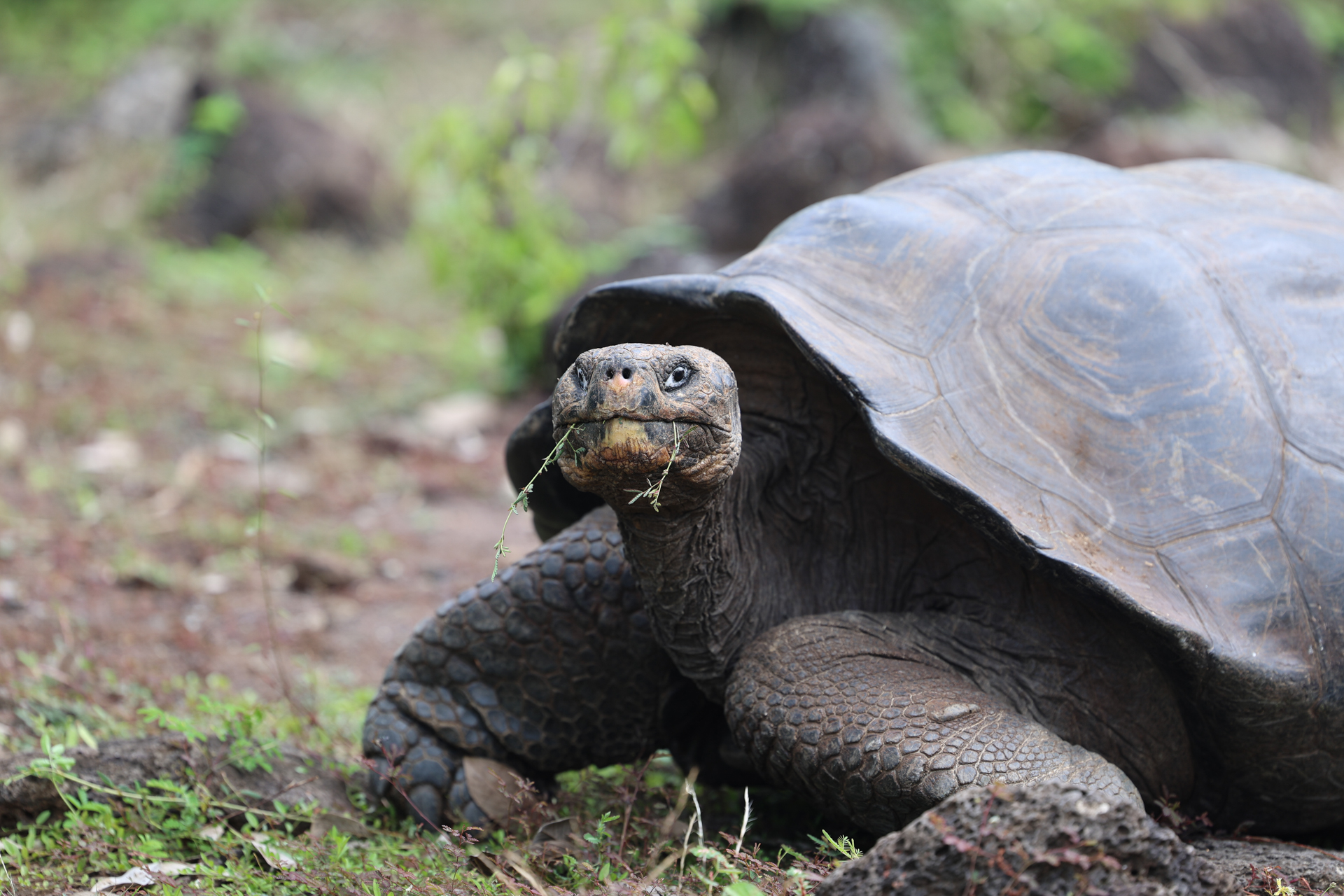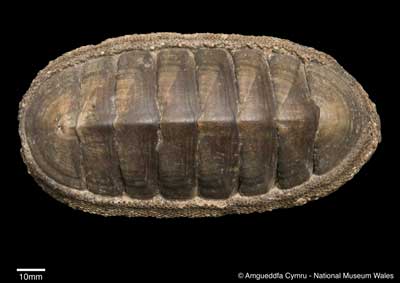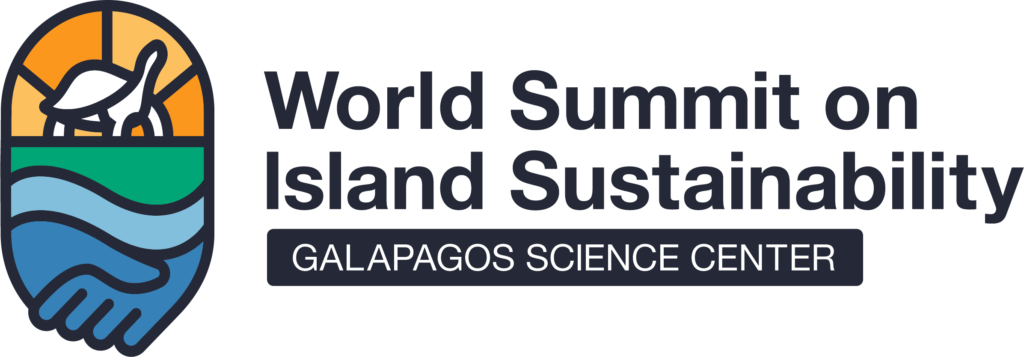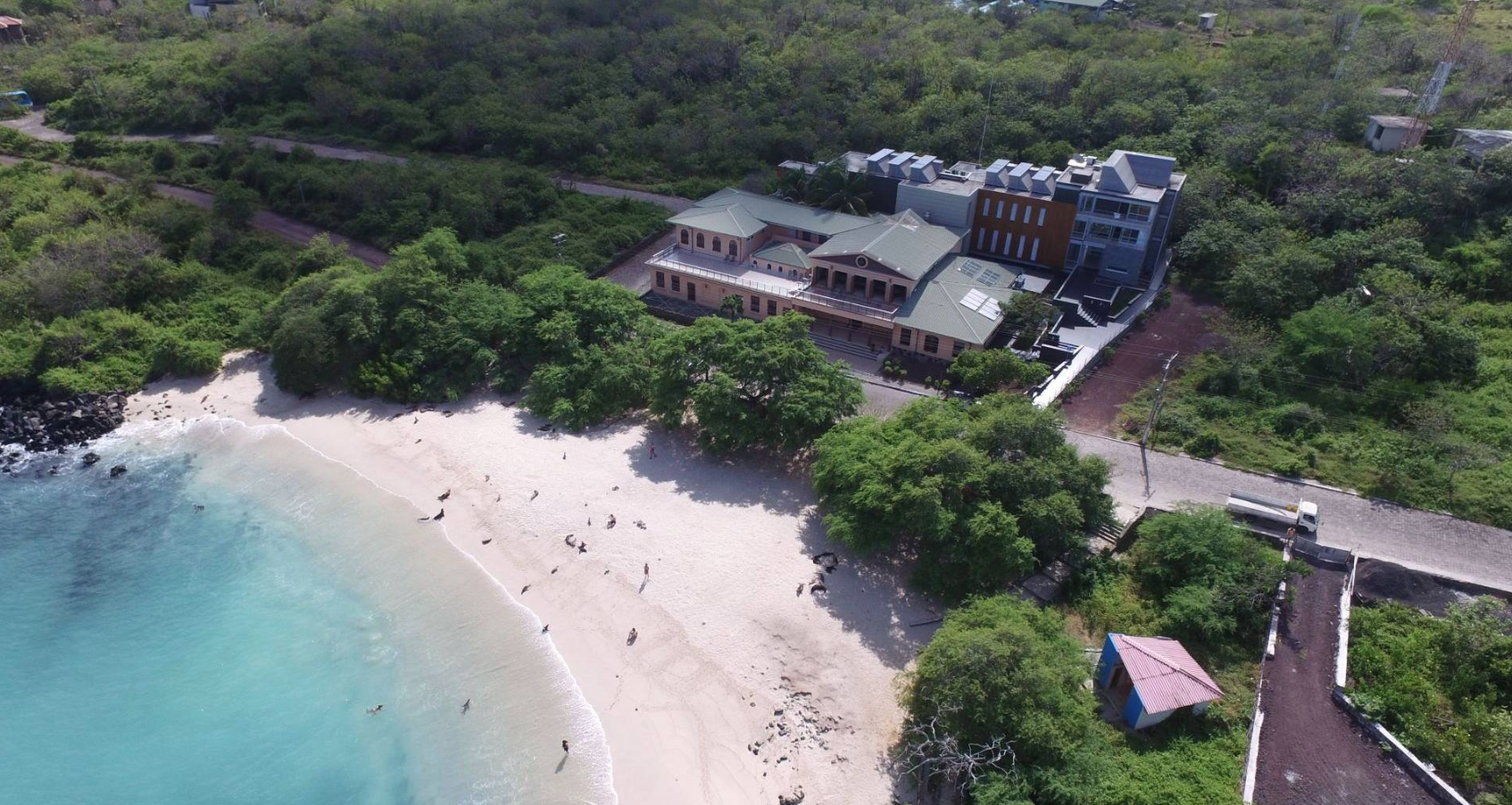The Galapagos Science Center expedition aimed to analyze plankton biodiversity and the effects of physical processes in the Galápagos Marine Reserve
- Scientists from the Galapagos Science Center (GSC) lead an international expedition aboard the research vessel R/V Marcus Langseth to study plankton dynamics in the Galápagos Marine Reserve.
- The research aims to understand how physical processes affected by climatic events such as El Niño can influence the base of the marine food web and which support key species such as fish, birds, iguanas, turtles, and sea lions.
- Since 2014, GSC and the Galápagos National Park have conducted a long-term monitoring program that has provided valuable information for the conservation and sustainable management of the archipelago in the face of climate change.
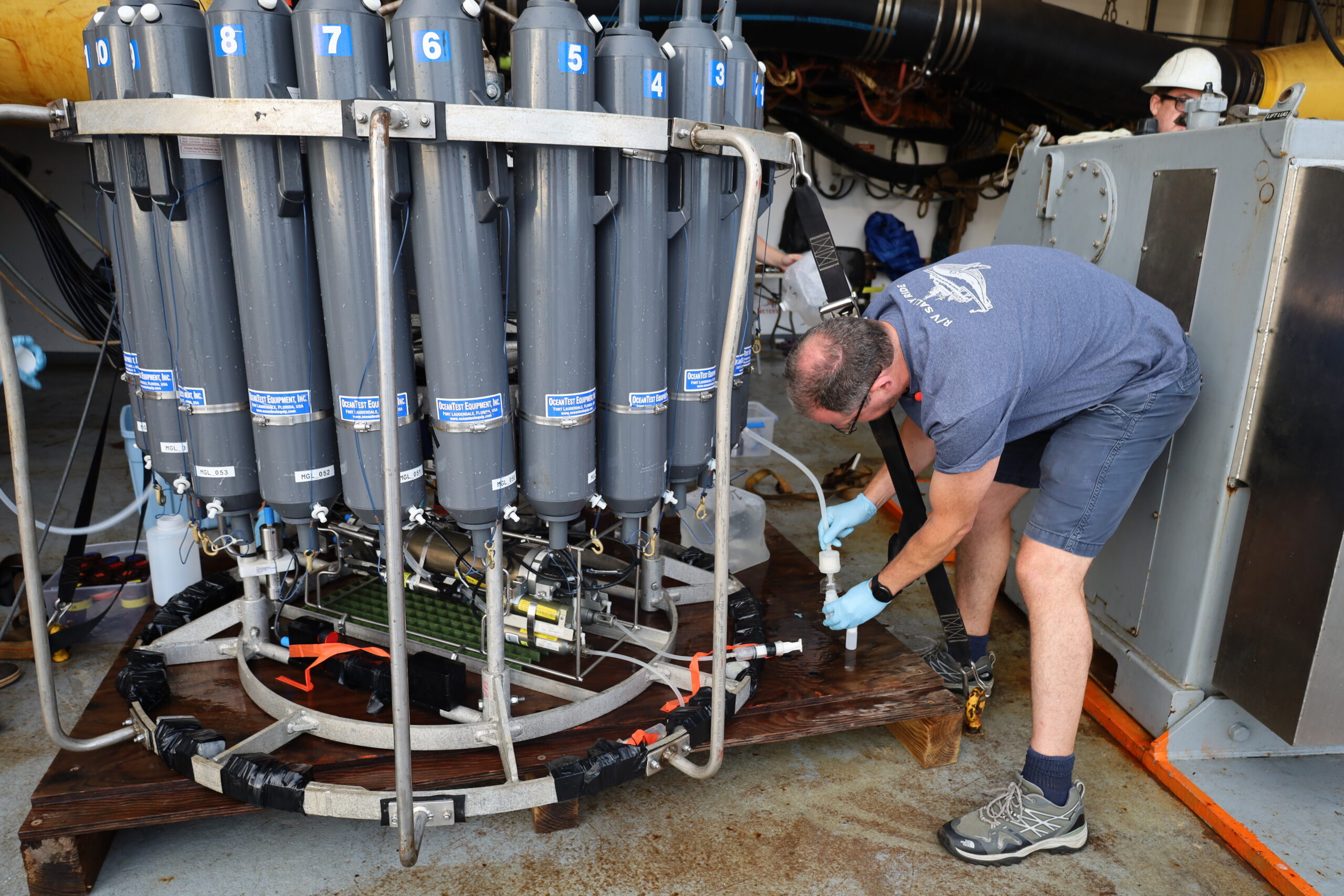
From July 30 to August 21, a scientific expedition was carried out aboard the research vessel R/V Marcus Langseth in the Galápagos Marine Reserve (GMR), led by researchers Adrian Marchetti and Harvey Seim of UNC and the GSC. The expedition aims to understand how oceanographic processes, influenced by the convergence of marine currents and climate events like El Niño, shape primary productivity and microbial biodiversity in the GMR. Through long-term monitoring, scientists aim to characterize the ocean’s physical, chemical, and biological conditions, evaluating their impact on plankton dynamics—the base of the marine food web—and higher trophic species. This effort will generate critical data for ecosystem modeling and conservation decision-making in response to climate change.
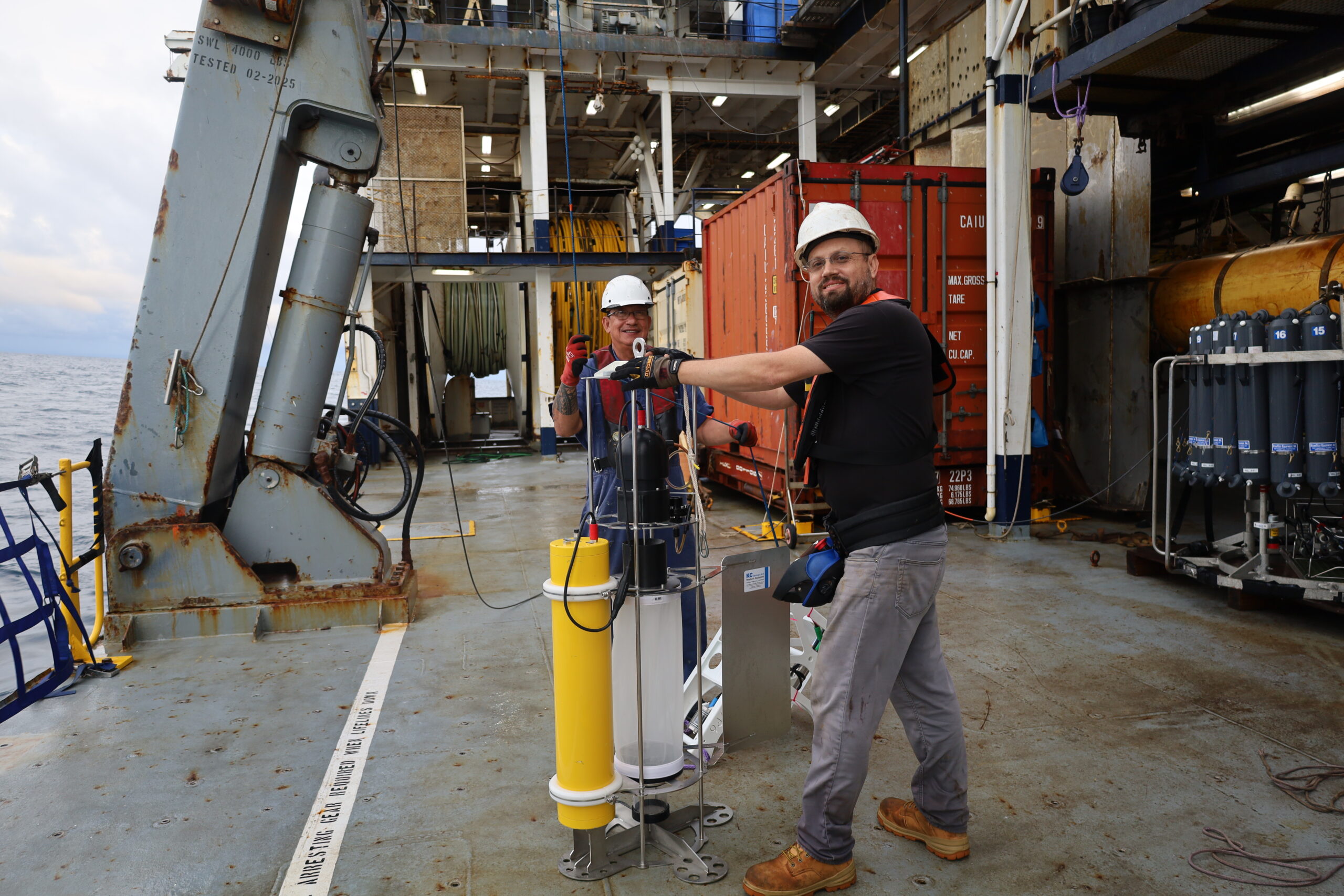
“This scientific expedition seeks to understand what controls the growth of phytoplankton—the base of the marine food web—and how physical processes, such as island wakes, internal tides, and topographic upwelling, supply nutrients that drive ecosystem productivity. Thanks to the R/V Marcus Langseth, we can, for the first time, perform a comprehensive set of simultaneous measurements combining physical and biological data, from currents to phytoplankton and zooplankton. Previously, precise measurements of current directions were not possible, but now we can determine both spatial distribution and temporal variation. This represents a major advance compared to previous expeditions, allowing us to integrate scattered knowledge and develop stronger predictive capacity regarding how Galápagos marine biodiversity will respond to environmental changes,” said Harvey Seim, Professor of Earth, Marine and Environmental Sciences (EMES), University of North Carolina at Chapel Hill (UNC-CH).
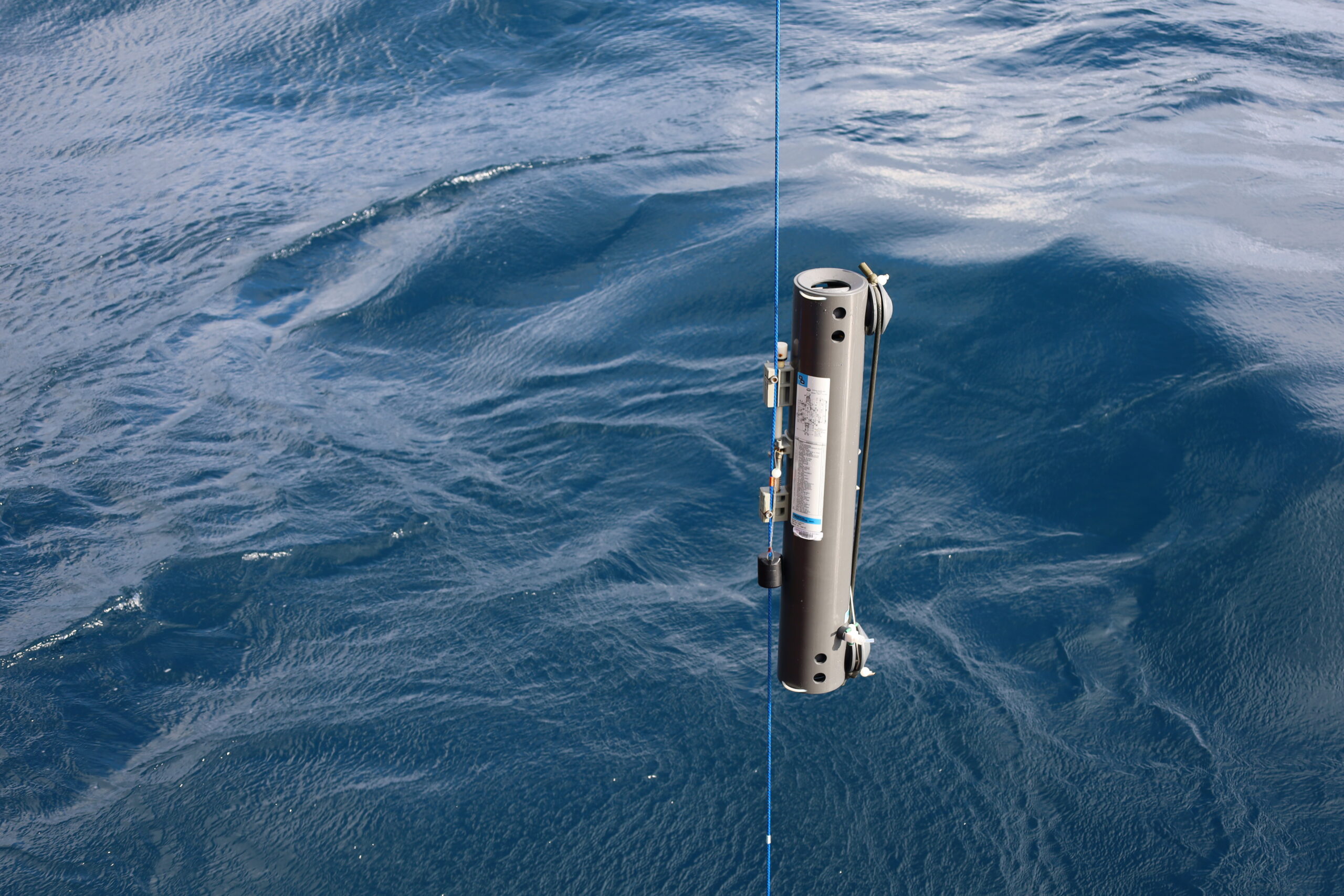
El Niño and the Marine Food Web
The oceanography of the Galápagos archipelago is complex due to the convergence of several major ocean current systems, which transport waters with distinct properties, generating physical and chemical gradients that drive microbial diversity. Intermittently, the stable conditions of the equatorial Pacific are disrupted by El Niño/Southern Oscillation (ENSO), a large-scale variation in oceanic and atmospheric conditions occurring every 3 to 10 years. During the positive phase of ENSO, the trade winds weaken, and warm waters from the western Pacific move eastward, affecting global climate patterns and causing dramatic changes in tropical Pacific ecosystems. The Galápagos have been heavily impacted by past ENSO events.
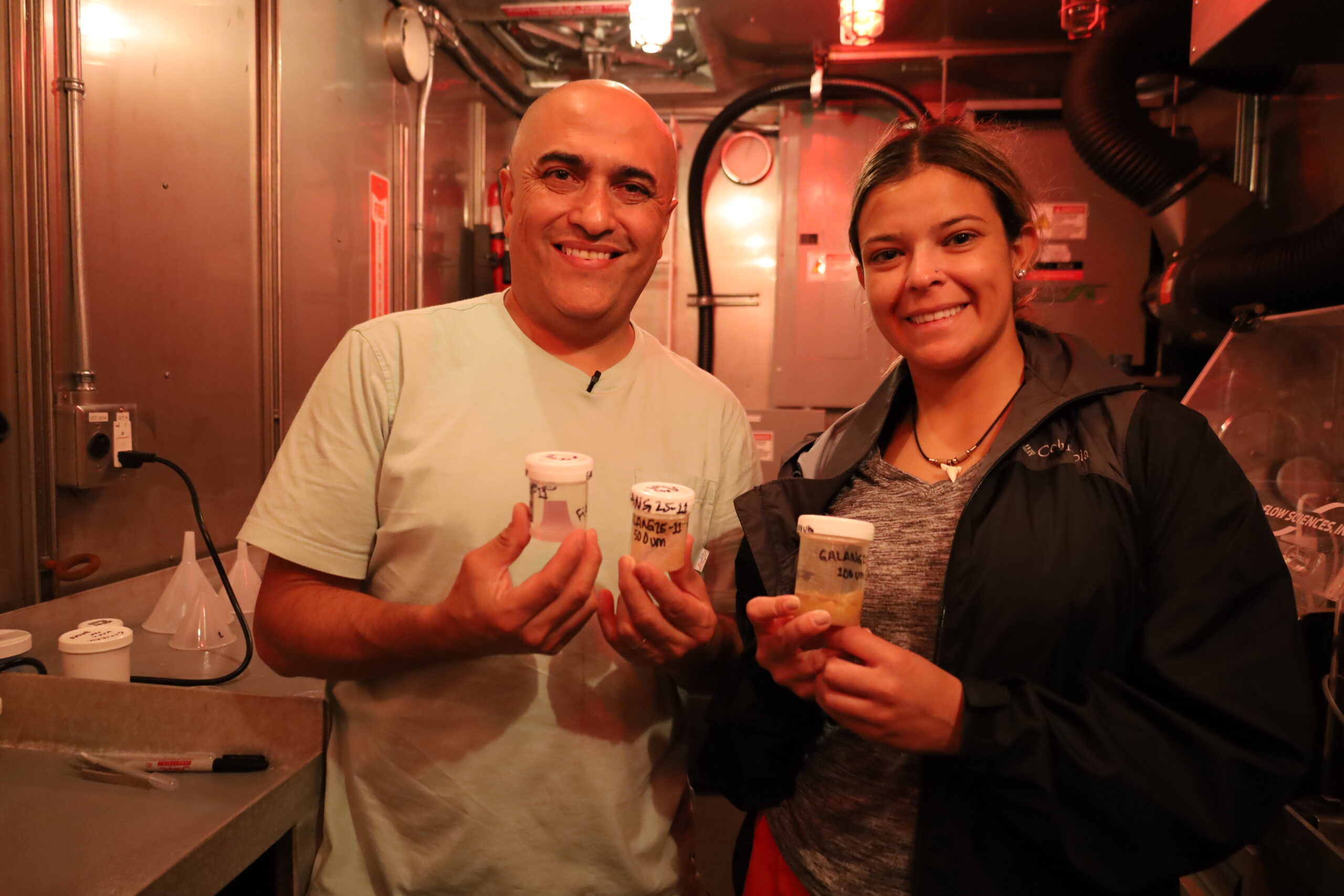
El Niño is characterized by unusually high sea surface temperatures. In the Galápagos, this phenomenon reduces the upwelling of nutrients from the deep, causing a decline in phytoplankton at the base of the marine food web. Reduced plankton affects the entire ecosystem: less zooplankton, fewer fish, and consequently less food for birds, sharks, turtles, and sea lions. Understanding these processes is key to designing conservation strategies in the face of climate change.
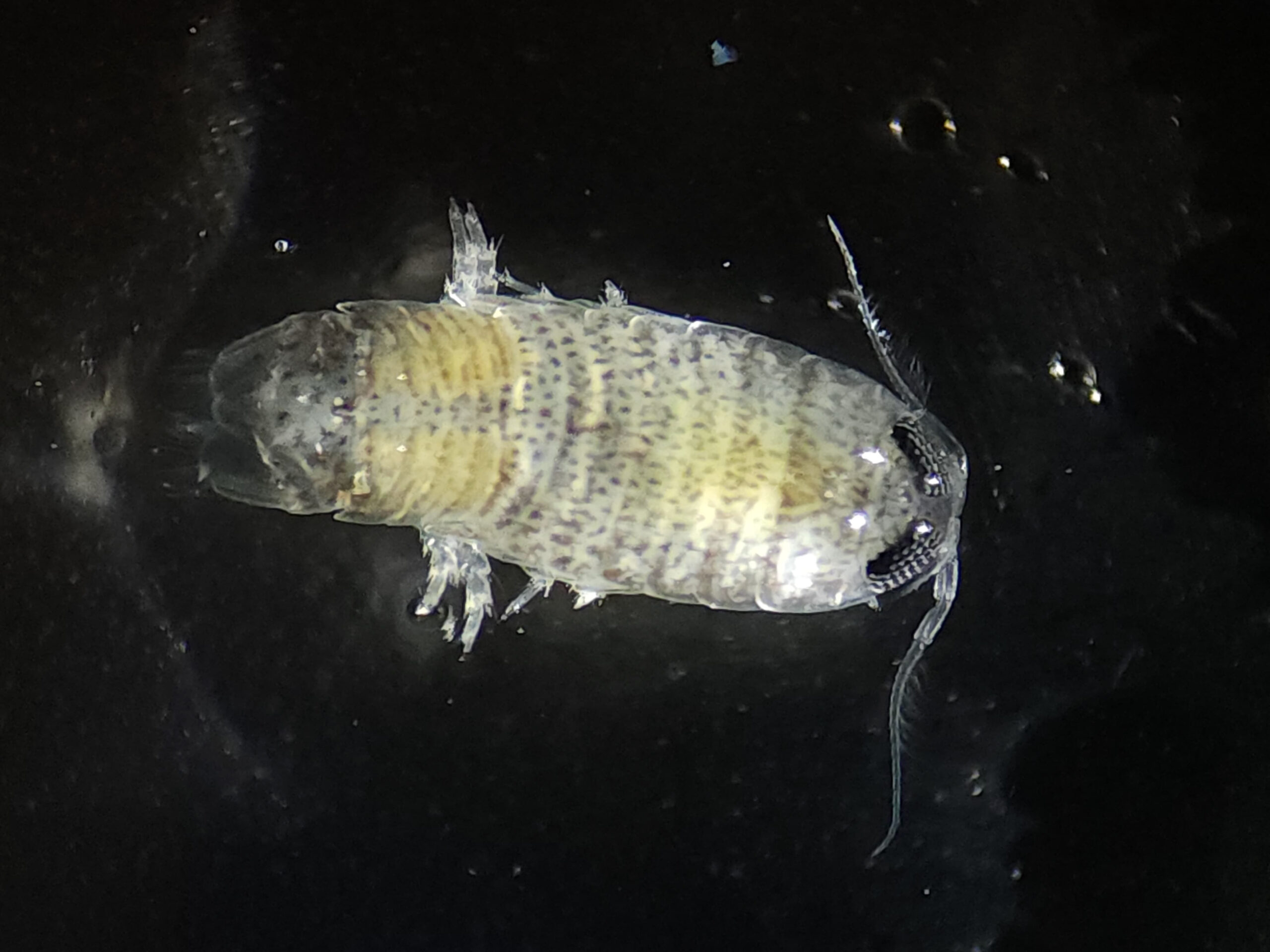
Plankton: The Foundation of Ocean Life
Since Charles Darwin’s voyages on the HMS Beagle, scientists have been fascinated by the richness and uniqueness of the Galápagos ecosystem. The islands and surrounding waters are global biodiversity hotspots, supporting food webs that include megafauna such as iguanas, sea lions, turtles, penguins, and sharks. The foundation of all this life is primary producers, mainly microbes and plankton (protists and bacteria), shaped by the ocean’s physical and chemical characteristics.
Plankton consists of tiny organisms floating in the water:
- Phytoplankton: microscopic organisms that perform photosynthesis and produce much of the planet’s oxygen.
- Zooplankton: small animals that feed on phytoplankton and serve as food for fish, whales, and corals.
Beyond being the “invisible food of the sea,” plankton regulates the global climate by absorbing carbon dioxide, playing a crucial role in the carbon cycle.
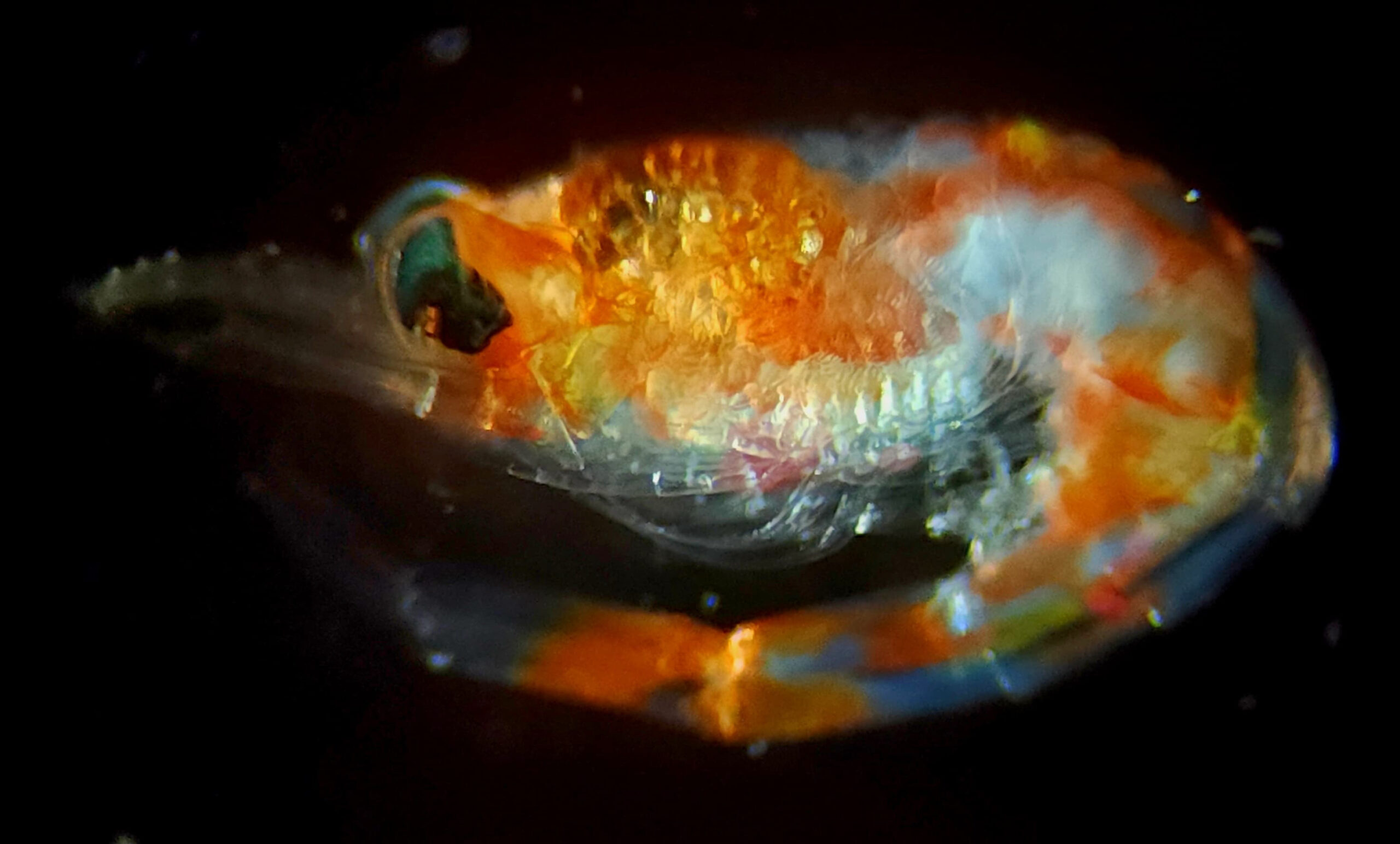
Exploring the Invisible Life of the Ocean
During these cruises, measurements and samples are collected to characterize ocean properties across all trophic levels, including:
- Physical: temperature, salinity, and light profiles at stations throughout the archipelago and continuous surface measurements, as well as measurements of current speed and direction from near the surface to 500 m depth.
- Chemical: dissolved and particulate nutrients and trace metals.
- Biological: chlorophyll a fluorescence, primary productivity, phytoplankton biomass, nitrate uptake rates, and microbial community composition.
These measurements allow scientists to characterize plankton functional biodiversity according to nutrient supply and provide key data on how oceans respond to extreme climate events.
“We are aboard this research vessel thanks to an award from the Biodiversity on a Changing Planet program by the National Science Foundation.. We apply methodologies such as CTD rosette casts, net tows, trace metal clean sampling, imaging systems, and other complementary techniques. The three-week expedition was conducted first in San Cristóbal, to study island wake systems, and then on the western coast of Isabela, where an upwelling generated by the subsurface Equatorial Undercurrent was investigated. Each research team collects biological, chemical, and physical measurements, which are integrated to understand how environmental conditions affect plankton productivity and diversity, and consequently, marine ecosystems,” said Adrian Marchetti, Professor of EMES, UNC-CH.
Over a Decade of Science in the Galápagos
Since 2014, the Galapagos Science Center (GSC) and the Galápagos National Park Directorate (GNPD) have maintained a long-term monitoring program in the GMR, generating unique information on how El Niño events alter marine productivity and microbial community structure.
Adrian Marchetti and Harvey Seim’s groups have led one of the most sustained research efforts in the archipelago, producing multiple scientific publications that strengthen understanding of marine ecosystems and provide essential insights for the management and conservation of the GMR in the face of climate change. The results of this work will improve understanding of the relationship between ocean conditions, nutrient supply, and plankton functional biodiversity in the Galápagos, providing crucial data to address climate change challenges in the region.
